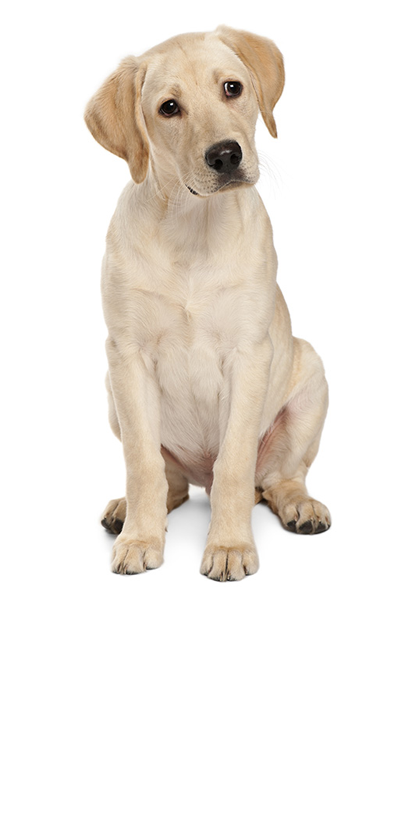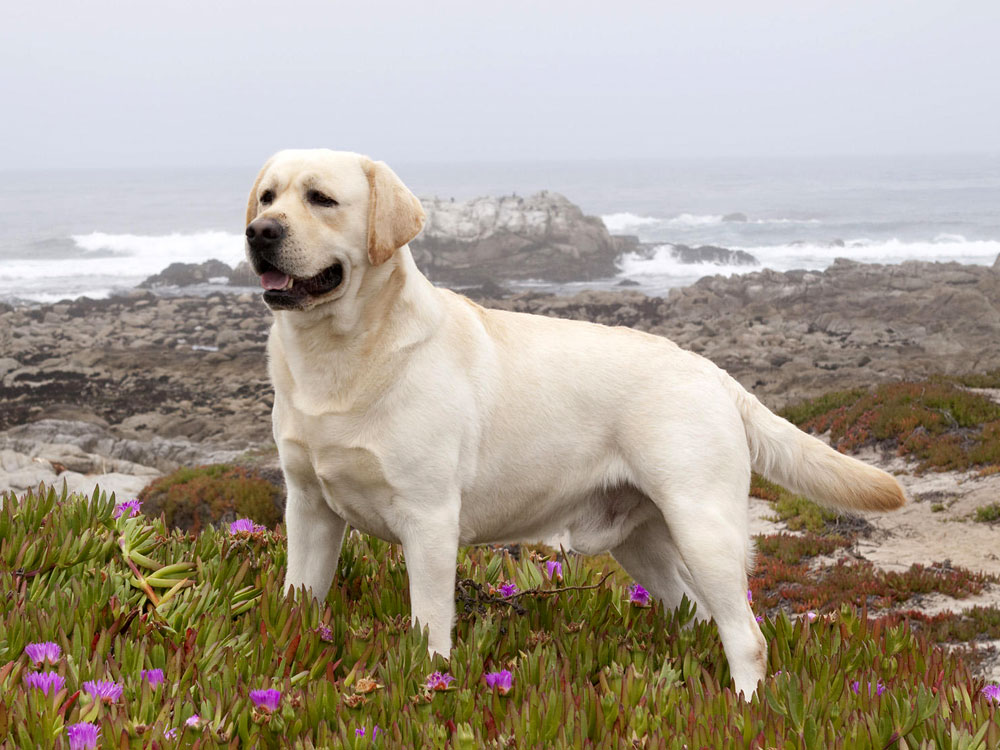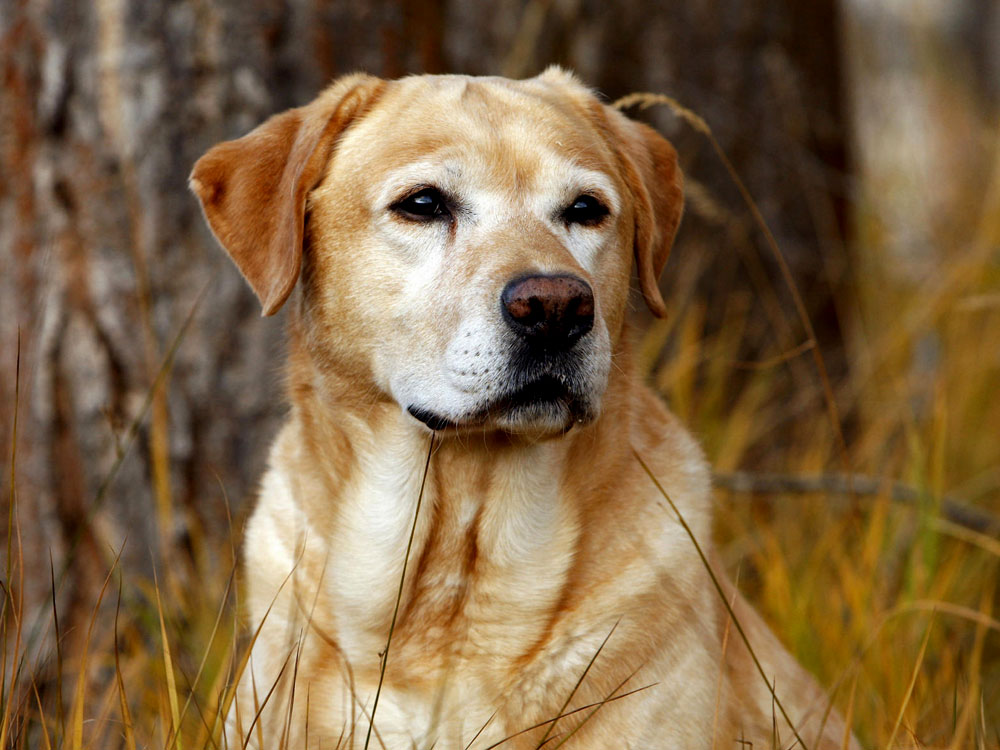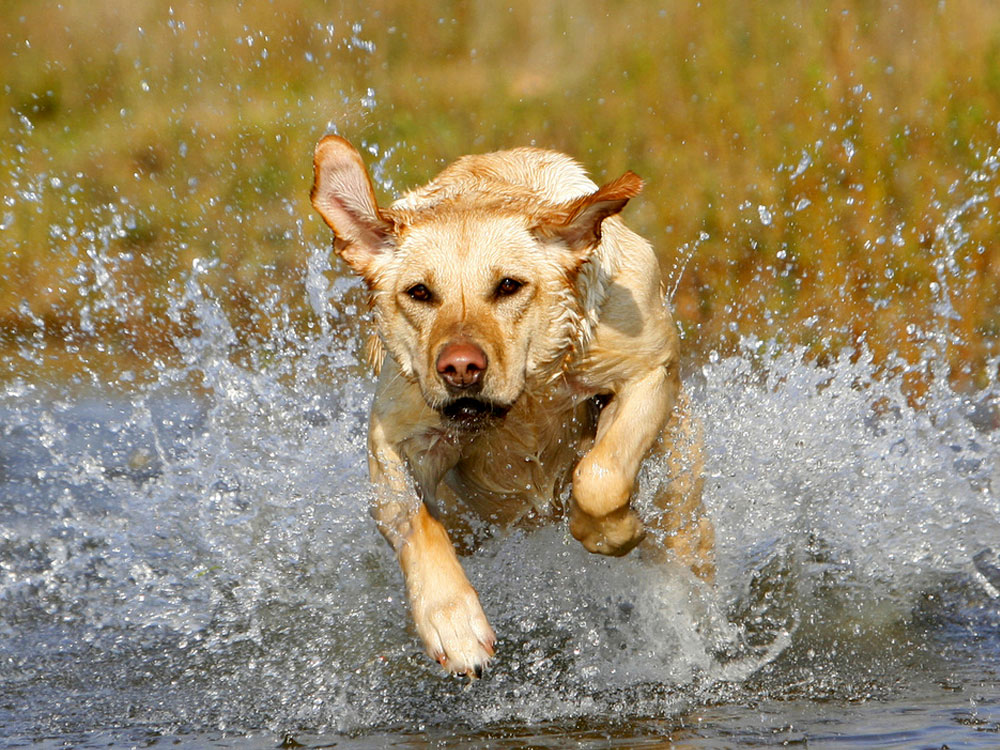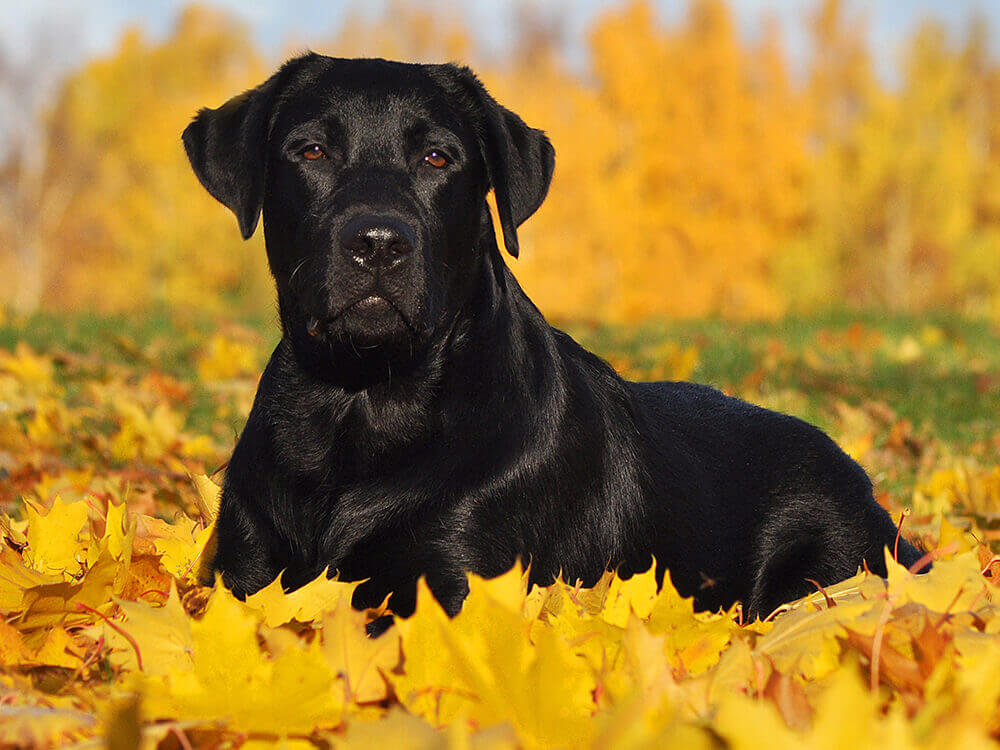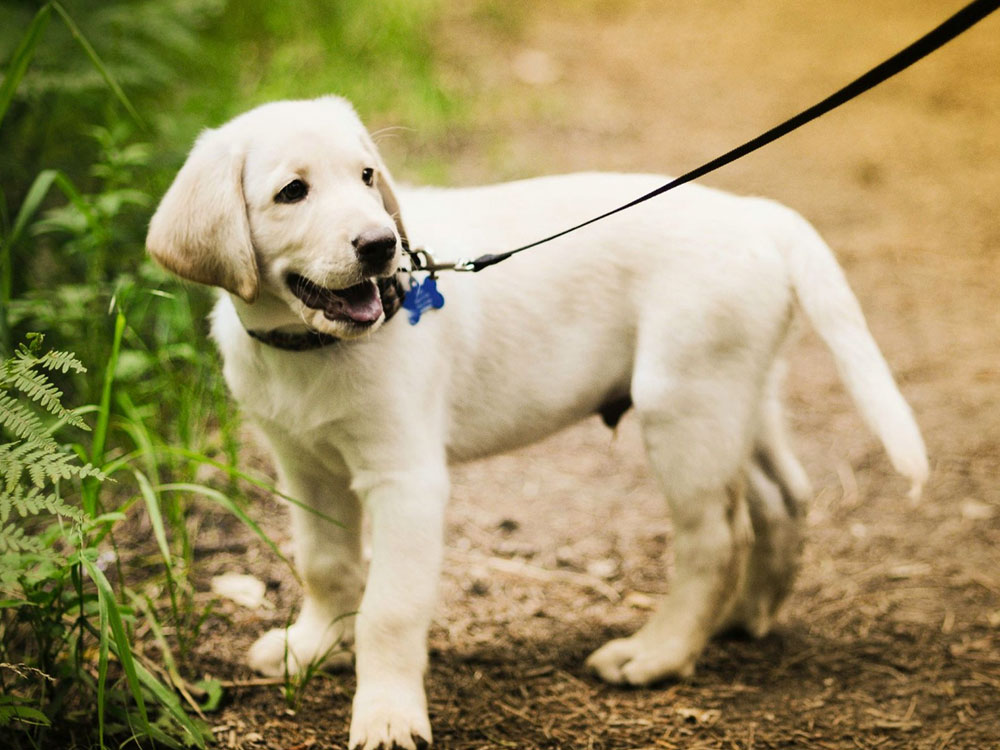
Labrador Retriever Breed Pictures
Vital Breed Stats
| Height: | 56 - 61 cm M | 53 - 58 cm F |
| Weight: | 27 - 36 kg M | 25 - 32 kg F |
| Breed Group: | Gundog Dog Group |
| Life Expectancy: | 10 - 13 years |
| KC Registered: | No |
Breed Characteristics
| Size: |  |
| Grooming: |  |
| Exercise Level: |  |
| Barking Level: |  |
| Good with Children: |  |
| Good with other pets: |  |
| Affectionate: |  |
| Protective: |  |
| Cost to Keep: |  |
Give a thumbs up if you love the Labrador Retriever

0
More About the Breed
History
The Labrador Retriever originated from the island of Newfoundland, Canada during the 16th century. It was originally called the St. John’s water dog and was used as helpers of local fishermen. They retrieved fish that escaped and pulled in nets from the water. It is believed that St. John’s dog was crossed with the Newfoundland dog and other local water dogs.
The dogs were then imported to England as retrievers for hunting in the 1830s and its name was changed to Labrador Retriever. In the 1880s, the Labs almost became extinct because of strict government restrictions of tax laws in Newfoundland. The good thing is that the Malmesbury family and other enthusiasts helped save the breed in England. The breed was officially recognised by the Kennel Club in 1903 and the American Kennel Club in 1917.
Appearance
Labs are agile dogs that stand 55 to 57 centimetres at the withers and weigh 65 to 80 pounds. It has a broad skull with a pronounced stop, medium-sized brown eyes and small ears. Since it was bred to as a working retriever, it has an athletic and muscular body. It comes in yellow, black and chocolate/liver.
The breed’s coat is composed of a short and dense topcoat and a soft and weather-resistant undercoat. Its two-layer coat is perfect for cold and wet environments, which is helpful for its retrieving roles.
Grooming
It is important to brush Labs daily as they shed heavily. Baths can be done every two months or as needed. More active dogs need to bathe more frequently especially if they are more adventurous and love rolling in mud.
Regularly trim nails if they get too long. Clean ears and make sure to wipe moisture with dry towels, or it can be a breeding place for bacteria that will cause infection. Don’t forget to brush the teeth twice or thrice a week to have good oral health, also make sure to use toothpaste for dogs.
Temperament
Intelligence
With its intelligence and eagerness to please, Labs are easy to train especially if you start them young. In fact, they will thrive in agility and obedience competitions. The breed is usually trained as a good therapy and assistance dog, search-and-rescue canine and retriever for hunters. Some owners think that since Labs are generally smart and well-behaved pooches, they do not need to be trained. Any type of dog needs to learn basic commands and manners.
Labs are great family pets because of their outgoing and friendly nature. However, it does not necessarily mean that all Labs are the same. Any dog breed without training and proper socialisation may exhibit negative temperament especially those with a history of abuse. Make sure to get a purebred Labrador puppy from a reputable breeder. If in case of adoption, be sure to know its history so you will know how to handle its personality and tendencies.
Nutrition
Labs are active working dogs so they require more protein and less carbohydrates to support their energy needs. This means that their diet should be composed 80% meat and 20% vegetables. They will also thrive on a grain-free diet. Most adult dogs do well with once-a-day feedings. Labs are prone to bloat so their meal should be divided into two.
Typical calorie needs of adult Labrador Retrievers per day:
- Senior and less active: up to 1,100 calories daily
- Typical adults: up to 1,500 calories daily
- Physically active/working dogs: up to 2,000 calories daily
Feeding
Health
Exercise
Cost of Ownership
Owning dogs are generally expensive, that is if you plan to be a responsible dog owner. Responsible dog ownership includes having the financial capacity to feed your dog, buy those toys and necessary equipment (beds, collars, leashes, bowls etc.), and take them to a veterinarian for health checks.
All these costs to consider throughout its lifespan of 12 years is not cheap. In an estimate, owning a Labrador Retriever will cost roughly around £27,100 - £30,800 in its lifetime. However, this does not include pet insurance costs, which depends on the type of coverage. Basic insurance coverage £23 while a lifetime policy will cost you £50.
For a Labrador, you might want to get a lifetime policy with higher coverage. Labradors are known to be an expensive breed due to its long-term hereditary health conditions. If you plan to have one, an estimated amount from £600 to £800 should be prepare.
Labrador Retriever Breed Highlights
- Labradors are reliable and trustworthy dogs, which make them excellent family pets.
- They are good-natured and friendly with people but lousy guard dogs.
- Labs are very sociable, which means they are great around other animals.
- They are very easy to train since they’re very agreeable.
- Labs can be a bit enthusiastic, bouncy and naughty.
- They are known to be the most versatile dog breed.
